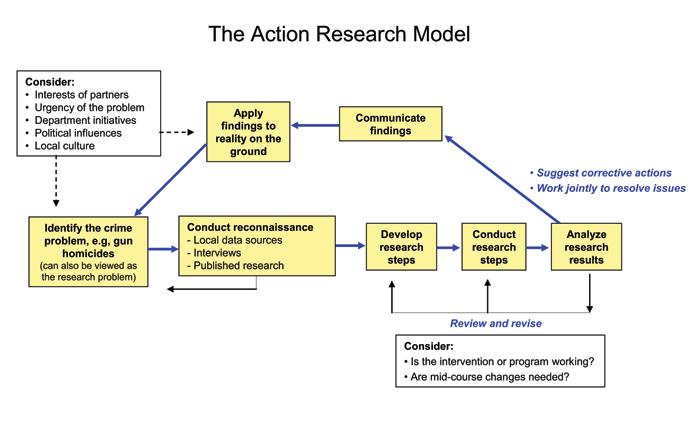Action Research Model
- Step 1. Identify the crime problem, e.g., gun homicides (can also be viewed as the research problem). See Consideration for Steps 1 and 7.
- Step 2. Conduct reconnaissance. Includes reviewing local data sources and published Research and conducting interview. If necessary, return to Step 1.
- Step 3. Develop research steps.
- Step 4. Conduct research steps.
- Step 5. Analyze research results.
See Review and Revise During Steps 3 – 5. - Step 6. Communicate findings. Includes suggesting corrective actions and working jointly to resolve issues.
- Step 7. Apply findings to reality on the ground. If necessary, then return to Step 1.
See Consideration for Steps 1 and 7.
Considerations for Step 1 and Step 7
During steps 1 and 7, consider:
- Interests of partners
- Urgency of the problem
- Department initiatives
- Political influences
- Local Culture
Review and Revise During Steps 3 – 5
Steps 3 – 5 are a feedback loop within the Action Research Model. Based on analysis of the research results (step 5), new research steps are developed (Step 3) and/ or research is new research is conducted (Step 4) and analyzed (Step 5).
Adapted from Evaluation of the Locally Initiated Research Partnership Program (pdf, 271 pages), by T. McEwen, September 2003, NCJ 204022: 34. Readan NIJ Journal article about the Locally Initiated Research Partnership program.


